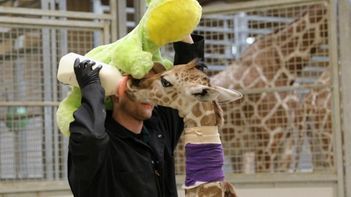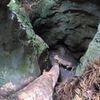The Great Lakes are a 'shipwreck time capsule'
(WPBN/WGTU) -- The Department of Natural Resources is highlighting the historic treasures found under the Great Lakes and explaining why shipwrecks are preserved so well.
An estimated 6,000 vessels have been lost on the Great Lakes.
The cold freshwater helps preserve Michigan's maritime history in a unique way.
The Great Lakes have preserved the most intact collection of wooden shipwrecks in the world and Michigan's waters hold the greatest concentration of those wrecks, according to Ron Bloomfield, who serves on the Michigan Underwater Preserve Council.
"In saltwater, wood disappears fairly rapidly,” Bloomfield said. “There are many vessels in Michigan’s waters that still have viable wood surviving after almost two centuries on the bottom.”
“Each shipwreck is a time capsule representing a specific, sometimes tragic moment. To see them, whether through a clear-bottom canoe or diving goggles, is to sense the lives of people from the past,” said Sandra Clark, director of the Michigan History Center, part of the Department of Natural Resources. “Because Michigan wants future generations to explore, research and enjoy them just as we do now, we have protected them.”
In 1980, Michigan adopted laws protecting the shipwrecks on its Great Lakes bottomlands.
No one can bring anything up from them without a permit, issued by the Michigan Department of Environment, Great Lakes and Energy, based on a clear plan for how the item will be preserved and shared with the public.
The Underwater Salvage and Preserve Committee also is working with DNR to create an online map for armchair shipwreck explorers and to build a strategy to connect more people, including kayakers, snorkelers, glass-bottom boat tourists, divers and people exploring museums and heritage trails on land, to Michigan shipwrecks and underwater preserves.
“We believe that people value what they know about and preserve what they value,” Clark said of this planned outreach effort.
Many of the thousands of Great Lakes shipwrecks have been found, but it’s likely that many more will be discovered with the availability of modern technology that makes it easier to scan the bottomlands and to remotely dive to greater depths.
Find more information about Michigan shipwrecks and underwater preserves by heading to the EGLE Shipwrecks website.
Anyone with information about the illegal removal, alteration or destruction of shipwrecks and associated artifacts can call or text the DNR Report All Poaching hotline at 800-292-7800.
























